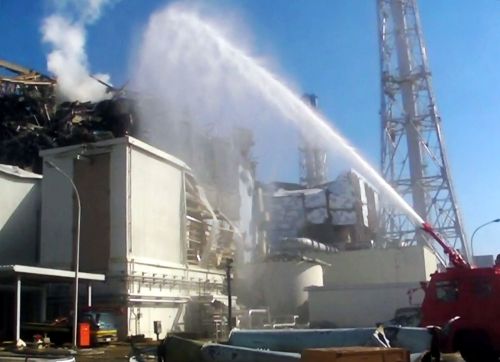MIDDLETOWN, Pennsylvania (AP) ― Japan’s nuclear crisis has transported residents of central Pennsylvania back 32 years, when the partial meltdown of the Three Mile Island nuclear plant raised fears that a massive amount of radiation could be released into the atmosphere or the Susquehanna River.
But there are stark differences between the disasters.
“It’s probably not politically correct to say it, but TMI was a piece of cake compared to what they’re facing over there in Fukushima, in terms of the problem,” said Harold Denton, the federal nuclear engineer who became a calming, knowledgeable voice during the height of the Three Mile Island crisis in March and April of 1979.
As it is with the Fukushima reactors, the central challenge at Three Mile Island was reversing the loss of cooling water in the reactor core that in both cases exposed the highly radioactive fuel rods, increasing the threat of a complete fuel meltdown and a catastrophic release of radiation.
But the Fukushima and Three Mile Island parallel has its limits, nuclear experts say. The Japanese engineers are facing a dramatically more complex crisis with multiple problems and challenges never faced in Pennsylvania three decades ago.
 |
A fire engine douses reactor No. 3 of the Fukushima Daiichi nuclear power plant at Okuma town in Fukushima prefecture, eastern Japan, Saturday. (AFP-Yonhap News) |
At TMI, efforts were concentrated on dealing with a single reactor. Its problems began at 4 a.m. on March 28 when a pressure relief valve failed and stayed open for two hours. Because operators thought it had closed, they shut off an emergency flow of water that had been triggered automatically, worsening the situation and exposing the fuel rods.
A presidential commission later said the TMI accident was “the result of a series of human, institutional and mechanical failures” that had implications throughout the U.S. nuclear industry.
By contrast, the Japan crisis resulted from a massive earthquake and tsunami that knocked out critical electric power and caused physical damage within the plant, including to the reactors’ normal emergency cooling system and at least one of the water-filled pool containing used fuel rods.
“That never happened at TMI,” said Denton. In Japan operators lost the normal ability to put water back into the damaged reactors.
By contrast, in Pennsylvania in March of 1979, all infrastructure, from roads to electric power supplies as well as the reactor’s water supply, remained intact. The critical steel and cement containment of the reactor stood solid. A water pool holding used fuel rods was secure.
In Japan, for the first time ever, nuclear engineers are trying to head off a total reactor meltdown in three reactors simultaneously, and deal with overheating fuel rods in a damaged storage pool at a fourth reactor.
While not as sweeping in devastation, the Three Mile Island accident still is the worst U.S. nuclear accident, ranked in severity as five on the scale of seven by the International Atomic Energy Agency. Only the Chernobyl accident with its massive radiation release in Ukraine is higher at seven. As of Saturday, Japan’s nuclear safety agency ranked the three Fukushima reactors in danger of a meltdown as a five in severity, the same as TMI, although that could go higher. A fourth reactor, which has had problems with the fuel cooling pond, was ranked a four in severity.
Whatever the ranking, the people near the TMI site along the Susquehanna River in central Pennsylvania are watching the news from Japan with some familiarity.
In 1979, they went through the same panic. They were victims of the same misinformation and lack of information. They, too, felt the same terror now felt by the people living near the six-reactor Fukushima complex.
“We tried to separate fact from fiction, dealt with experts who persisted in telling us either more than they knew or less than they knew. ... We struggled to present accurate information,” former Pennsylvania Gov. Dick Thornburgh said recently, recalling the TMI accident which came when he was but 72 days in office in the state capital, Harrisburg, only a few kilometers away.
Thornburgh recalled the terror and confusion in the first five days after the accident.
At one point he strongly urged the evacuation of women and children from near the TMI reactor, only to rescind the recommendation five days later when it was found that he had been given wrong information about a burst of radiation from the plant.







![[Today’s K-pop] Blackpink’s Jennie, Lisa invited to Coachella as solo acts](http://res.heraldm.com/phpwas/restmb_idxmake.php?idx=644&simg=/content/image/2024/11/21/20241121050099_0.jpg)
